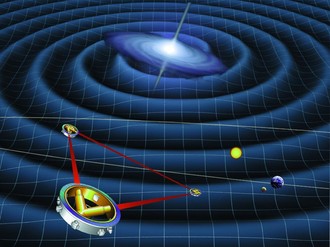
The future launch of the first space based gravitational-wave observatory LISA - The Laser Interferometer Space Antenna, shceduled for 2034, will provide an opportunity of multiband gravitational-wave observations. On one hand some binary black hole-black hole systems that will be detected in LISA low-frequency band (years before final merger) can be expected to show up in high-frequency ground based detectors (like LIGO or Virgo) just prior their merger. On the other hand, mergers detected on ground can be searched for in the pre-recorded LISA data stream. Knowledge of system parameters may help to dig up signals that otherwise are buried in LISA noise.
Using information about 10 LIGO/Virgo BH-BH mergers, and supported by additional information from evolutionary theoretical predictions, an international team of astronomers, including Krzysztof Belczyński from the Copernicus Center estimate that few to tens of LISA detections can be used to predict mergers detectable on the ground. Conversely, hundreds of events could potentially be extracted from the LISA data stream using prior information from ground detections.
More in the original paper "Multiband gravitational-wave event rates and stellar physics"
Picture: NASA illustration of LISA, taken from http://lisa.jpl.nasa.gov/gallery/lisa-waves.html.






